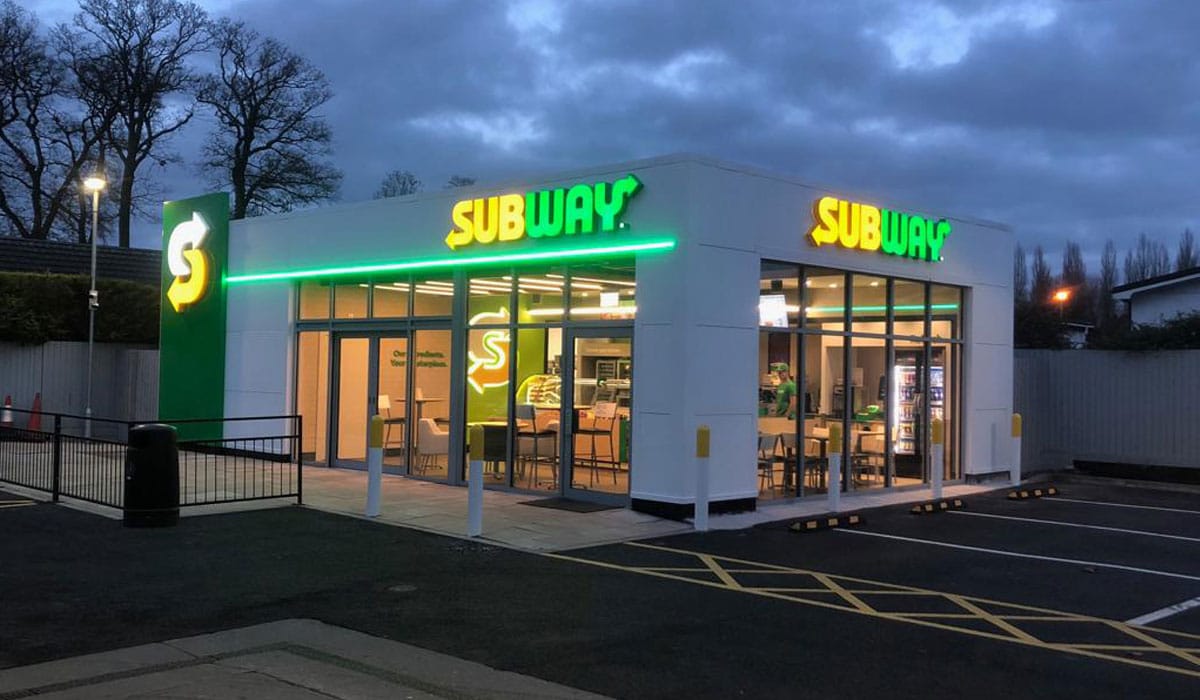Subway is pushing a multi-year transformation journey, and the next step is a shift in U.S. development strategy.
The world’s largest sandwich chain announced Thursday that instead of being a development-focused organization, it will become experience-oriented, meaning a streamlined footprint, remodeled restaurants, and a transition to multi-unit operators.
“Subway was built with an expansion mindset that helped us become one of the world’s largest quick service restaurant brands,” Steve Rafferty, senior vice president of development, said in a statement. “Today, we are strategically focused on the quality of our restaurants versus quantity and looking to franchise restaurants to sophisticated, multi-unit owners that can help ensure we deliver a consistent, high-quality guest experience.”
The brand has spent the past several years downsizing its footprint in the U.S. Subway, a 100 percent franchised concept, finished 2021 with 21,147 stores domestically, a net decrease of 3,650 units compared to 2019. It’s still by far the largest restaurant chain in the U.S. in terms of restaurants, followed by Starbucks and McDonald’s.
To optimize growth, Subway is partnering with franchisees and using a data-driven approach to ensure stores align with market-specific needs and are in the right locations and format—including drive-thru and nontraditional.
At the same time, the brand is continuing to remodel outlets with its “Fresh Forward” design, which includes LED lighting, new floor coverings, containers, tables, colors, and chairs. To date, nearly 9,000 units have committed to the remodeling program. Subway will improve the format and layout as time goes on to better meet customers’ needs, like adding prep and pickup areas dedicated to digital orders.
Additionally, to enhance its franchisee profile, the company is actively inviting multi-unit restaurateurs to buy out existing operators who want to retire or sell.
“Historically, Subway has been a system of primarily single-restaurant operators,” Rafferty said. “These operators—often first-time business owners and budding entrepreneurs—have always been integral to our growth strategy, and they will continue to be a critical part of our brand strength. At the same time, to ensure we remain competitive for years to come, we’re scaling up with high-caliber multi-unit franchisees, who bring operating expertise, development capabilities and capital.”
The new development strategy comes nearly a year after the fast-food brand launched Eat Fresh Refresh, the largest menu update in its history. More than 20 upgrades—11 new and improved ingredients, six new or returning sandwiches, and four revamped signature sandwiches—hit outlets nationwide in July 2021.
Thanks to that rollout, Subway surpassed its 2021 sales projections by almost $1.4 billion and reached its highest AUV since 2014. Three-fourths of the system, or more than 15,000 locations, experienced a 7.5 percent rise in same-store sales in 2021 compared to 2019. In Q1 2022, the same number of stores saw comps increase 8.2 percent versus three years ago.
Outside of the U.S., expansion has accelerated. In the past 10 months, Subway has inked eight master franchise agreements for nearly 5,000 units across Asia Pacific, Europe, Middle East and Africa, and Latin America and the Caribbean. This includes a deal with private equity firm Everstone Group to open more than 2,000 locations across South Asia, which Subway called one of the “largest master franchise agreements in quick-service restaurant history.”







